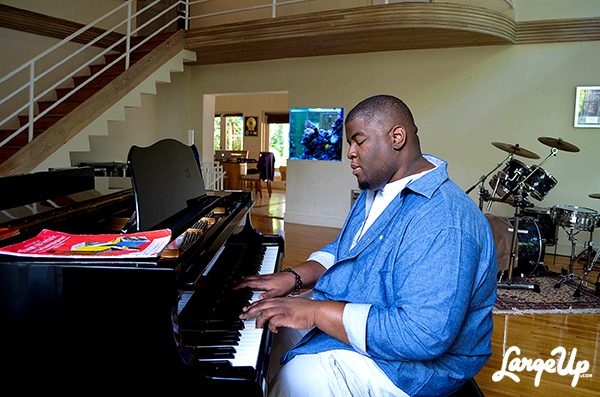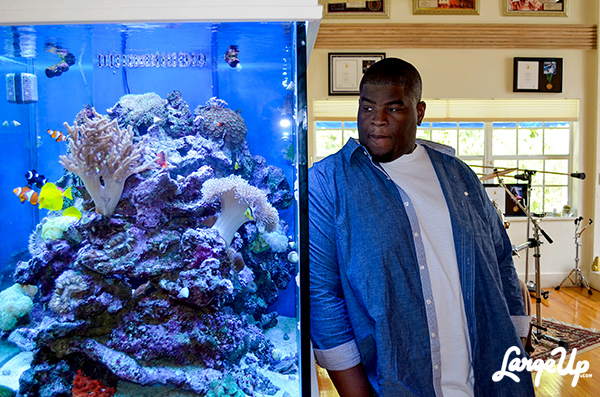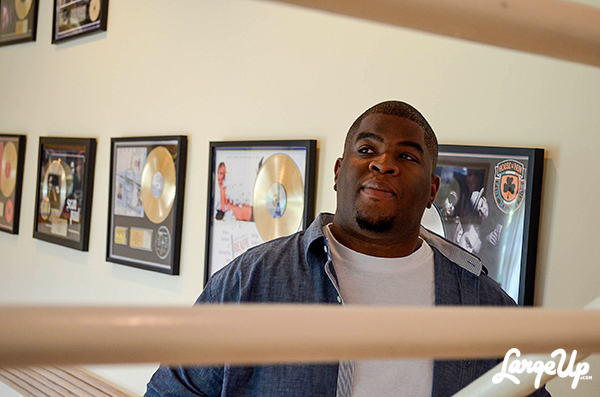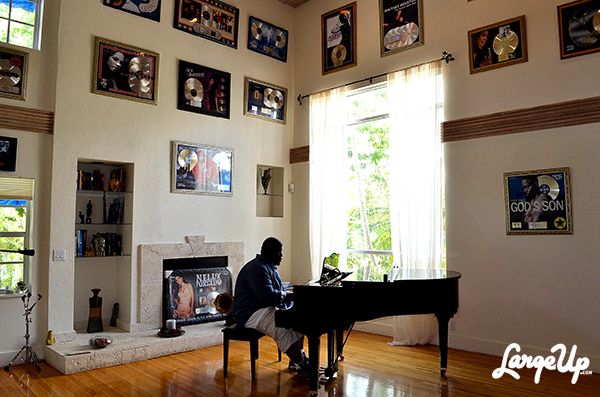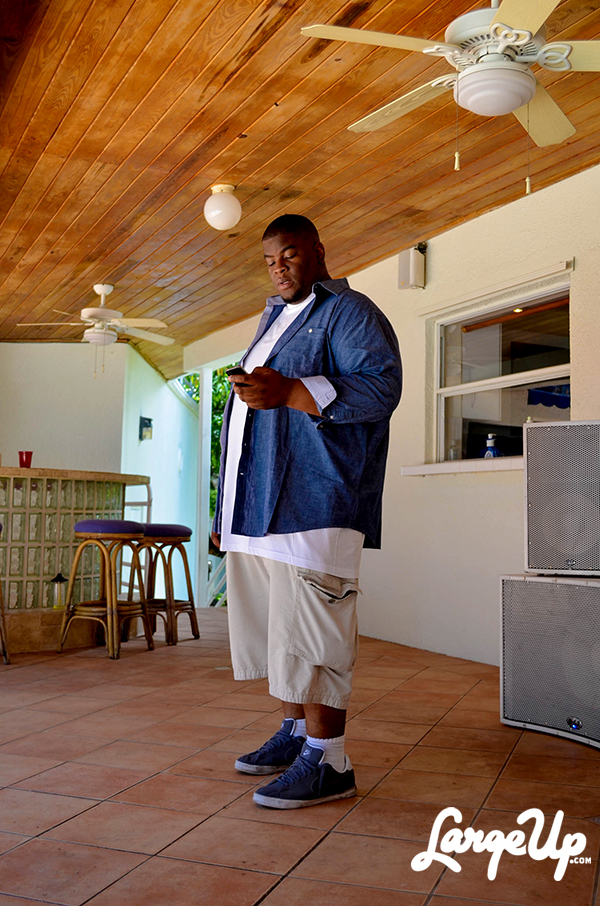Words by Jesse Serwer, Photos by Daison Osbourne—
“Most people didn’t even know I exist, and I don’t want them to,” Salaam Remi says. “‘Know my name if you gotta write it on a check’ has been my motto for a long time.” Readers of album credits know the low-key Remi as the guy who put the Fugees, Amy Winehouse, Jasmine Sullivan and Miguel on the map with career-launching hits, and as Nas’ most reliable collaborator for the last decade. The son of Trini-Bajan music producer and veteran promotions man Van Gibbs, Salaam is also behind the most artistically successful hybrids of hip-hop and reggae, from his 1992 remix of Super Cat’s “Ghetto Red Hot” to his recent work with Spragga Benz, and his sublime flip of vintage Super Cat track “Dance Inna New York” on Nas’ “The Don.” His catalog is stacked with remixes so definitive that the originals are no longer even a thought (see Ini Kamoze’s “Here Comes the Hotstepper,” a U.S. No. 1 single after Salaam got his hands on it).
Raised in New York City, Salaam has, since 2001, been based in Miami. He recently invited LargeUp to the private studio he calls Instrument Zoo for a rare look at the creative den where he laid the foundation for Back to Black with Amy Winehouse, and crafted the tracks that make up the heart of Nas’ Life is Good. Head over to Okayplayer for part two of our interview with Salaam, and check our latest Toppa Top 10 for the stories behind 10 of Salaam’s most classic records, from “Ghetto Red Hot” to “The Don.”
LargeUp: For someone who has produced as many major records as you have, you have been fairly anonymous. Or at least until recently. I know you’ve had to be something of a spokesman for Amy Winehouse since she died. But do you deliberately try to keep yourself in the background?
Salaam Remi: It’s my personality number one. I felt that when a record comes on and says, “hey, this is gonna make you dance,” then now you’re just cheating the record by saying it, rather than making emotion there. So my legacy and catalog of records from the beginning is things that people felt on the other side of the planet, who might not even speak the language the record was made in, but the emotion carried. Rather than me ever having to say, ‘Oh this is a make-you-dance,’ or, ‘This is a make-you-sad,’ or whatever type of song. Or even knowing who made it. Because I wasn’t selling me, I was selling the artist. The artists that I’ve worked with are recognized as artists, not as producer-driven robots.

Salaam recreating the Sleng Teng riddim on the Casio MT-40
I’ve moved past beat status probably around the Fugees. I made the “Fu-Gee-La” beat for Fat Joe, he didn’t use it, but what it became for the Fugees was helping them with artistry, and they became artists. The Fugees were all separate artists who then produced other artists. I’m doing a lot of film work now. When you’re [scoring] a movie you don’t wanna be like “oooh that song is on” and pay attention to the artist instead of the person’s story. The music is just a bed to enhance that and luckily when people look at my career they see I’ve worked with artists who are really recognized as artists, like a Lauryn [Hill], like a Amy [Winehouse], a Jasmine Sullivan, a Nas. Sometimes they know who did the production but the average human just wants the experience.
My dad was involved with loads of records that people had no idea he was involved in, so I came up understanding that it wasn’t about being up front in order to be successful. My success isn’t based on that. It’s based on what’s lasted this amount of time. I’ve lasted this long by doing what’s right to me. Except playing around in some some Spragga video, I’ve never actually been in a video. I went to the Fugees “Nappy Heads” video but got cut out. That’s just not my steez. I don’t even go to the clubs. But I know how to move a club, because I spent so many years on the DJ level. A good DJ understands what moves the club, and what emotions move people.
LU: Can you produce albums top to bottom often, or do you have to set aside years to do that right?
SR: It depends on the chemistry and if the stars align where there’s a project that really is there. At this point I’m 40 years old, I’ve been doing this since I was 17 professionally, and had records out since I was 14. Coming from the background I come from, I understand how to crack whatever the code is. There’s a lot of things I contributed to greatly with one session. Miguel came here for two days, recorded “All I Want is You,” and a song that’s probably gonna be the single off his new album, in one session. What “All I Want is You” meant to Miguel, it wasn’t the number one record, but it was the record that got the car started. I get with the artist, we figure out something then, boom here’s your song. I understand how to do that in one go. Those things mean as much as doing different records for different artists. I don’t have anything I’m going all the way in on now outside of my own projects that I’ll be rolling out by next year.
LU: What are those projects?
SR: Mostly instrumental stuff, then a few artists that are incubating right now. I’m working on my new infrastructure of how to drop projects ’cause there needs to be a whole ‘nother motion on how to do it. I see a generation of people that are getting bored, listening to the same stuff over and over. My goal is to maintain what I’ve been doing up til now— when you see my name and you know it’s something of quality, it might be any genre or any type of artist, but it’s gonna stick in your head and make you go wow, that was different. However that materializes, its not really about a particular artist or project, or genre. Whatever inspires me, I’ll start vibing out, and it will become what it needs to become.

